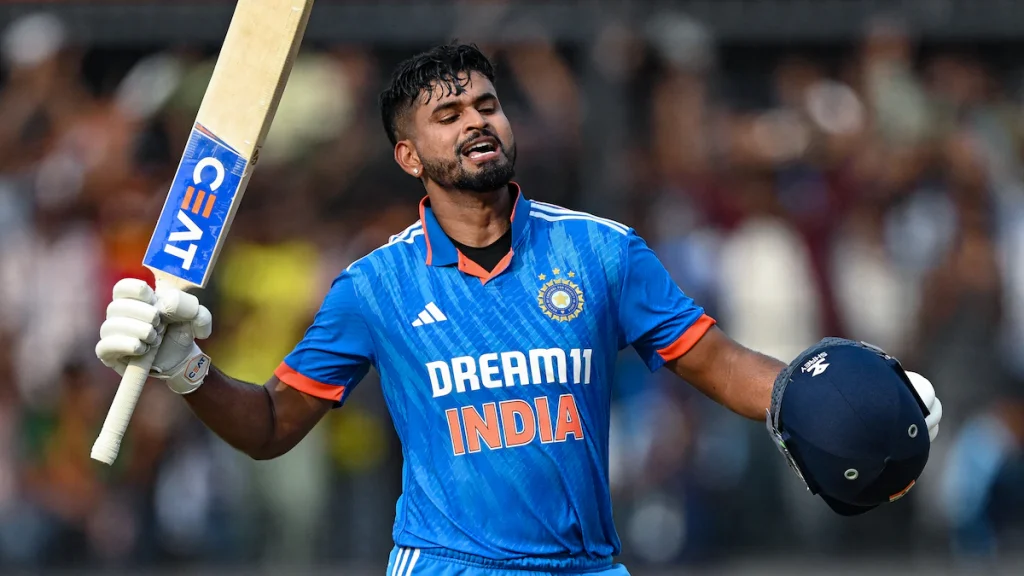The announcement of India’s squad for the 2025 Asia Cup has once again sparked debate and reflection on the team’s extraordinary depth in T20 cricket. Among the notable omissions were Shreyas Iyer, Sai Sudharsan, Prasidh Krishna, Yashasvi Jaiswal, KL Rahul, Rishabh Pant, and Washington Sundar—players who, in any other international side, would likely be first-choice picks.
The sheer quality of those left out underscores a broader reality: India’s supply of T20 talent now far exceeds the available demand. The selectors were not searching for hidden gems or patching weaknesses; instead, they faced the challenge of trimming down a star-studded list to just fifteen names.
Shreyas Iyer: The Harshest Exclusion
Perhaps the most talked-about name missing from the squad is Shreyas Iyer. Captain of his IPL side, one of the league’s most prolific six-hitters, and a proven match-winner, Iyer seemed like a natural fit. His record in recent games is strong too, with two centuries and a fluent 72 on a slow Chepauk surface in his last seven outings.
Yet, as Ajit Agarkar, chairman of selectors, succinctly explained:
“With regard to Shreyas, who can he replace? No fault of his, nor is it ours. At the moment, you can just pick 15.”
It was not about Iyer’s form or suitability, but simply about excess options in every batting slot. At No. 3, Tilak Varma has made the position his own with explosive performances and the added utility of rolling his arm over. Below him sits captain Suryakumar Yadav, the most prolific T20I batter of his generation. Beyond that are Hardik Pandya and Axar Patel, both indispensable as all-rounders.
In such a structure, Iyer, despite his brilliance, simply couldn’t find space.
The Others Who Missed Out
Iyer was not the only big name missing. The list of exclusions reads like a fantasy XI:
Sai Sudharsan – The highest run-scorer of the 2025 IPL season, yet edged out due to India’s abundance of top-order options.
Prasidh Krishna – The highest wicket-taker of the season, but lost out as Harshit Rana impressed in his debut with a three-wicket haul.
Yashasvi Jaiswal – A breakout star of the 2024 T20 World Cup, now sidelined in favor of Shubman Gill’s leadership potential.
KL Rahul – Still versatile and experienced, but pushed aside as India builds a younger, more aggressive unit.
Rishabh Pant – Once India’s most thrilling batter, but his exclusion barely caused debate, showing how far the talent pool has expanded.
Washington Sundar – A handy all-rounder, yet edged out by Shivam Dube and Rinku Singh’s greater hitting power and balance.
Each of these players has a case strong enough to walk into most international sides, yet for India, they form a parallel lineup—one that could realistically challenge the chosen fifteen.
The Age of Excess in Indian Cricket
Agarkar’s words, and the selection itself, highlight that India’s biggest challenge in T20s is no longer finding match-winners—it is managing abundance.
This abundance has parallels with the West Indies of the late 1970s and 1980s and Australia of the 2000s, when both teams had world-class players waiting in the wings. Back then, many stars sat out simply because there were not enough spots in the XI. Today, India finds itself in the same luxurious position.
Even the captain, Suryakumar Yadav, acknowledged this when he described the Asia Cup as “the tournament where the journey to the World Cup begins.” The focus is already on the 2026 T20 World Cup, and the Asia Cup squad selection reflects that forward-looking vision.
Shubman Gill’s Inclusion – More Than Just Numbers
If one name was always destined to make the squad, it was Shubman Gill. His return is less of a comeback and more of a continuation, given he had previously served as vice-captain in T20s. His absence in recent months was largely due to Test cricket commitments, not form.
To omit Gill would have been unthinkable. He represents the next era of Indian batting, the heir apparent to the mantle carried by Virat Kohli and Rohit Sharma. Beyond his numbers—an average of 30.42 and a strike rate of 139.27 in 21 T20Is—Gill brings star value, leadership qualities, and a temperament that thrives under pressure.
As Agarkar pointed out:
“We obviously see some leadership qualities in him, and his form in England was what we were hoping for. [He] exceeded all our expectations, which is a great sign when there’s so much pressure as captain.”
Gill’s inclusion was therefore about vision, optics, and leadership, not just raw stats.
The Samson Question
Gill’s return, however, creates a structural headache. Where does this leave Sanju Samson?
Samson has been India’s designated wicketkeeper-opener, with three centuries in his last 10 outings at the top. Yet, with Gill and Abhishek Sharma penciled in as openers, Samson may either have to drop down the order or make way for Jitesh Sharma, who is more comfortable as a finisher.
This dilemma highlights the fluidity required in today’s Indian setup. No player, no matter how successful, can afford to cling to a single role. As Agarkar joked, leaving the headache to captain Yadav, adaptability will be the key to survival in India’s evolving T20 structure.
Abhishek Sharma: The Breakthrough Story
One name that forced his way into the squad is Abhishek Sharma. Until last year, he was behind Rahul and Jaiswal in the pecking order. But his performances—a hundred in his second T20I, a recent 135 off 54 balls at a strike rate nearing 194, plus the bonus of left-arm spin—made his inclusion irresistible.
For Gautam Gambhir, India’s head coach, such multi-utility players are invaluable. In a format that rewards flexibility, Abhishek embodies the modern template: explosive batting, bowling utility, and fielding excellence.
The Harsh Realities of Selection
The stories of Washington Sundar and Prasidh Krishna reflect how minuscule margins now determine selections. Sundar’s ability as a bowler-batter was weighed against Rinku Singh’s finishing skills and Shivam Dube’s seam option. Prasidh’s wicket-taking prowess was overshadowed by Harshit Rana’s impactful debut.
Even Pant’s name barely featured in discussions, an astonishing development given his reputation just a few years ago. It all points to one undeniable truth: India’s talent pool is overflowing, and selectors now deal in abundance rather than scarcity.
Conclusion: A Luxury Problem
The exclusion of Shreyas Iyer and other big names is not an indictment of their abilities, but rather a confirmation of India’s dizzying depth in T20 cricket. The selectors’ task is no longer about finding the right names but about trimming excess talent into a balanced fifteen.
As Agarkar’s candid explanation shows, there are simply more deserving players than available spots. This is both a luxury and a challenge. For those left out, it is heartbreaking, but for Indian cricket, it is a sign of strength unmatched in the modern game.
If the current trend continues, India may well be entering an era comparable to the West Indies’ golden age or Australia’s world-dominating run. And while debates over omissions like Iyer’s will persist, the reality is that India’s T20 riches ensure every squad chosen will be formidable enough to challenge for world titles.



